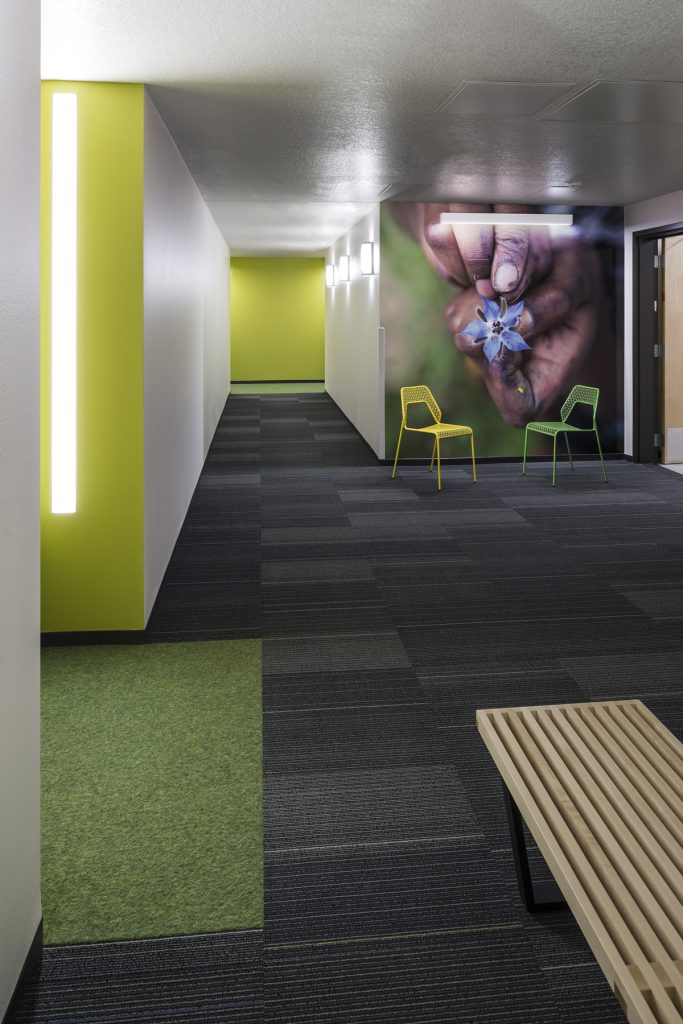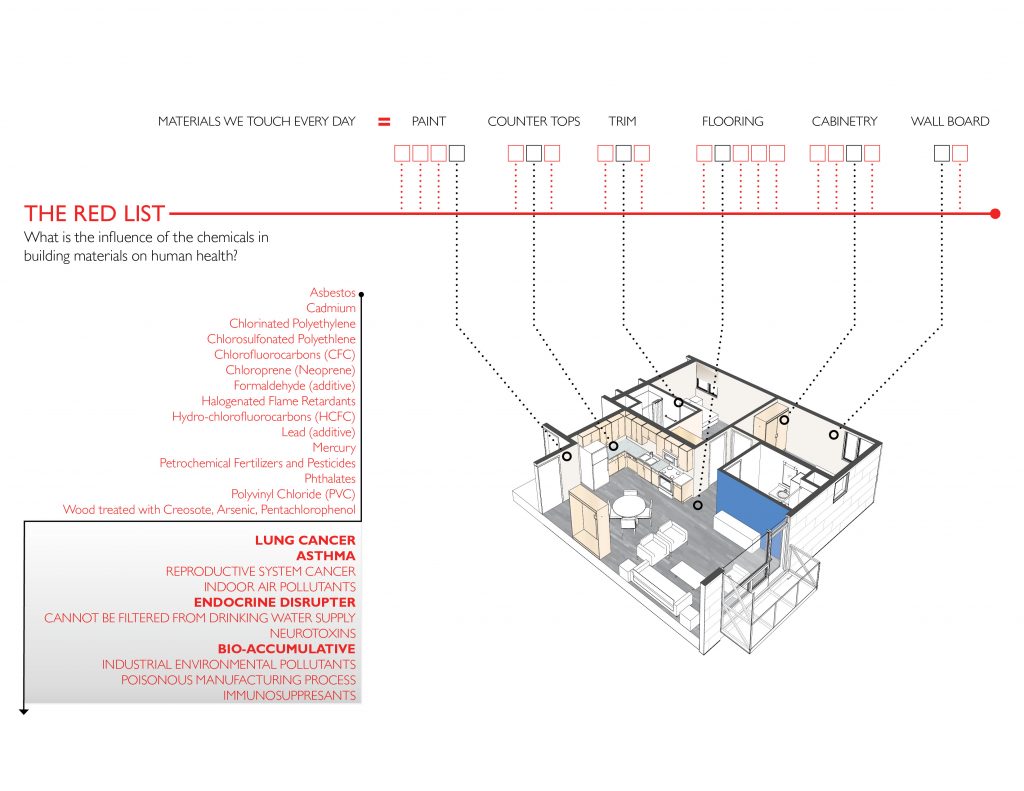We design for joy, beauty, function, sustainability, wellness, and health. These equally important values lead to solutions that balance the art and science of design. People are taking more control of their health by using wearable devices, accessing health information online, and checking their blood pressure with digital devices that report results to their doctors. Individuals make choices about the food they eat and their personal fitness routines. Yet people have very little control over health and wellness within workplaces and public spaces such as libraries or museums.
Interior designers and architects today have access to an increasing number of resources that help them make better design decisions to improve human health within indoor environments. For example, the Cradle to Cradle Products Innovation Institute has created the Cradle to Cradle Certified Products Registry, and the Materials Research Collaborative (led by the Healthy Building Network and BuildingGreen) has developed the Health Product Declaration (HPD) Collaborative.
By age 17, humans have, on average, 700 chemicals within their bodies, according to Raefer Wallis’ “Protecting Health at Multiple Scales” presentation at the Greenbuild 2015 Conference in Washington, DC. These chemicals accumulate from the air we breath, absorption through our skin, and particles that get into our bloodstream and lungs through the water we drink.

In 2014, Kaiser Permanente committed to purchasing furniture free of toxic flame retardants. Flame retardants found in furniture cushions are very toxic, especially when they catch fire and firemen are exposed to the toxins while fighting the fire. Halogenated materials used to replace flame retardants also pose health hazards. The Environmental Protection Agency (EPA) approves 90% of the chemicals that are submitted for review. 62,000 chemicals were grandfathered into the EPA database as acceptable in 1976, and the database currently includes an estimated 83,000 approved chemicals. The EPA only has 90 days to review a submitted chemical, and it reviews about 7,000 chemicals each 90-day period. If the chemical is not reviewed within the 90 days, it is automatically approved to go to market. (Ref. 1)
Designers need to look beyond the headlines that promote new chemicals to replace known toxic chemicals and conduct deeper research to determine whether the new chemicals are actually better. A classic example is microwave popcorn. Years ago, studies exposed a toxic chemical called diacetyl in microwave popcorn that caused “popcorn lung disease.” The discovery outraged popcorn customers and factory workers. Popcorn manufacturers responded by replacing the toxic chemical with a substitution called pentanedione, which was to be much safer. Studies have now shown that pentanedione causes more health issues than the original chemical, diacetyl. (Ref. 2)

Reusing materials and furniture is viewed as better for the environment than building new products and tossing old furniture into landfills. However, in reality, emissions from furniture may actually increase as the piece ages, particularly with upholstered pieces.
In order to make the best material recommendations for our clients, we need to evaluate their toxicity and environmental impact. MSR surveys all of the manufacturers that place product samples in our materials library to ensure that we have access to the healthiest, most sustainable product options. This process enables us to propose informed design solutions using products that are safe for people and the planet.
We encourage everyone to think about how the indoor environments can improve our health in the same way we focus on eating healthy foods and walking 10,000 steps per day. Eventually, we hope to see more transparent labeling on all of the furniture and products that we use daily in our offices, public spaces, or homes.

Notes
Ref. 1: “Exposure to Toxic Environmental Agents” by The American College of Obstetricians and Gynecologists Committee on Health Care for Underserved Women American Society for Reproductive Medicine Practice Committee, and The University of California, San Francisco Program on Reproductive Health and the Environment, Obstetrics and Gynecology, October 2013.
Ref. 2: Center for Disease Control NIOSH Science Blog, “Diacetyl and Food Flavorings,” http://blogs.cdc.gov/niosh-science-blog/2008/11/10/diacetyl/http://blogs.cdc.gov/niosh-science-blog/2008/11/10/diacetyl/